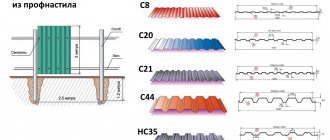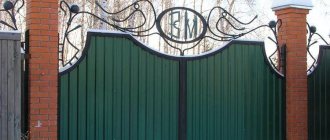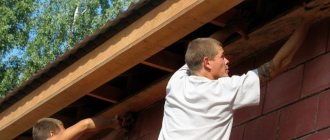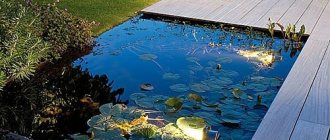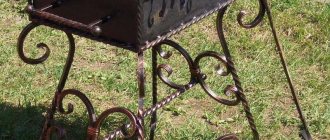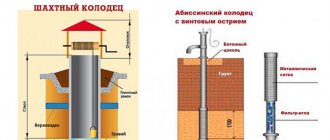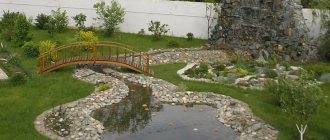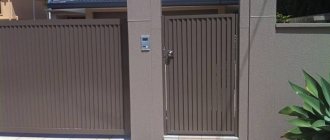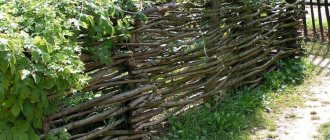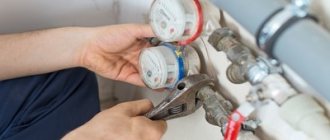When purchasing a plot of land, the owner prepares in advance for serious financial investments. Pouring the foundation and erecting the walls of a future home is not cheap, and interior work is by no means free. However, there is another important expense item that cannot be neglected. This is the installation of fences.
Any property, whether within the city limits or outside it, must be fenced. Even if you are lucky with your neighbors, you need to delineate the boundaries of your plot at least along the outer perimeter. With a fence, it is easier to feel confident in the safety of your property, your own safety and comfort from the lack of attention from passers-by. A good hedge also performs an important aesthetic function. A beautiful fence will become a harmonious design element that fits into the landscape and emphasizes the style of the house.
There are a variety of materials available for sale to create durable and attractive fencing. Modern technologies make it possible to build a fence from almost any natural or artificial raw material. And in order to save money, you can try to do it yourself. In reality, it's not that difficult. We will tell you how to build a fence yourself, and what nuances should be taken into account when choosing a particular building material.
Which corrugated sheeting is suitable for a fence?
In the marking of profiled flooring you can see different letter designations that indicate its load-bearing capacity and purpose. What types of corrugated sheets exist:
- "N". The load-bearing profiled sheet is one of the strongest, with a groove in the middle of each wave, which increases the rigidity of the material. Purpose – construction of interfloor ceilings.
- "WITH". Wall, made of thin sheet steel, with a small width and height of waves. Purpose – installation of a fence made of corrugated sheets and wall cladding.
- "NS". Load-bearing wall, in comparison with load-bearing, is less rigid and cheaper. Also called roofing. Purpose – installation of roofing. Acts as an alternative to metal tiles.
We advise you to study in more detail: “Is it worth putting metal tiles on the roof: an overview of the material, for which roofs and buildings it is best suited.”
The fence is made of wall corrugated sheets. These can be brands, C10, C20, C21, C44. In some cases, HC35 is also used. The numerical designation after the letter indicates the profile height. It affects the final stiffness of the canvas.
Modifications of corrugated sheets recommended by experts for fencing
Please note: the C20 sheet, contrary to the markings, has a wave height of 18 mm, not 20 mm.
C8 sheets are suitable for the fence , but in regions with strong winds it is better to take sheets from C10.
They can have a thickness of 0.45-0.5 mm. Since the fencing also has a decorative function, it makes sense to buy painted corrugated sheeting. It is more aesthetically pleasing than galvanized and even more durable.
Required Tools
If you decide to install a fence yourself, you should prepare (purchase):
- spirit level (level);
- roulette;
- shovel;
- sledgehammer;
- spacers;
- clamps;
- pegs and ropes.
Without the availability of the specified devices, materials and tools, it will be impossible to carry out high-quality work.
Stage 1. Development of a fence made from corrugated sheets: sketch and drawing
A corrugated fence is an extended structure that includes:
- Pillars (2) installed in a hole in the ground (1), which is concreted and filled with sand and gravel backfill (4).
- Joists (5) connecting the pillars. For a height of up to 1.5 m, 2 joists are sufficient, top and bottom. If the fence is higher than 1.5 m, an additional log in the center is required.
- Profiled sheets (6), which are attached to the transverse joists with self-tapping screws. To hang a gate or wicket, the support posts are equipped with hinges.
What elements does the fence consist of?
To calculate the required number of materials and install a durable fence made of corrugated sheets, you should first develop a sketch of it. This is a preliminary sketch depicting:
- Where will the fence be located, taking into account the entrances, the location of the gate, green spaces on the site, topography, etc.
- Changes in ground heights are noted to determine where shorter or longer sheets will be needed.
- Dimensions of individual straight sections, their height and length.
- Pole installation points: basic and intermediate.
- The length of the sections is for a sectional fence. It is taken as a multiple of 1, 1.5 or 2 sheets of corrugated board.
When installing a fence made of corrugated sheets, it is necessary to take into account that the distance from the ground to the bottom edge of the sheet can be 0-150 mm. With a terrain slope of up to 3%, the difference between the sheets is 150 m. For steeper terrain changes, the height difference is taken individually.
An example of a drawing of a fence made of profiled sheets
Sketch of a fence made of corrugated board
Products
Manufacturers create and offer customers a wide variety of stamped and artistic elements. Next we will look at the most significant and fundamental details of wrought iron fences .
By the way! If you are interested in photos of wrought iron fences, then you can see more pictures on our gallery page. Also below on this page you will find links to site materials that discuss elements of fences.
Pillars
Creating a forged fence begins with making a strong, reliable and high-quality base. Metal rods and pipes , as well as bricks can serve as support .
Composite pillar
Composite poles made from several metal rods have the following advantages :
- high stability and strength;
- long service life;
- the ability to create a fence of various heights and configurations;
- ease of installation and assembly of the structure.
Metal pipes (for example, twisted ones) can act as a support. A foundation of this type has its own advantages :
- resistance, strength, durability;
- simplicity and efficiency of installation;
- affordable prices for pipes;
- It is possible to make non-standard fences.
In the photo on the right there are such pillars from the Siberia Metal Design company.
The combination of forging and brick is popular with customers. Decorative forged patterns on the fence and the universal properties of the stone make the design an almost ideal fencing option. The advantages of this type of base and other interesting information will be presented in a separate article.
Grids (sections, meshes)
The fence can be assembled directly at the installation site. However, a more convenient and common option is ready-made forged fence sections. The contractor creates sections of the required sizes .
At the client's site, the bars are attached to the posts and a reliable fence is obtained. In addition, clients have the opportunity to order highly artistic forging , which is done by hand. However, forged products of this kind are characterized by high prices. An alternative to them are sections welded from parts created in accordance with cold forging technology. These forged elements are sold at lower prices, accessible to everyone.
Sometimes sections are called forged meshes. It is important not to confuse forged mesh with welded mesh; these are different products. Complete and detailed information about welded mesh for fences is presented on the website stknf.ru.
Stage 2. Preparation of materials
Corrugated sheeting . For fencing, flooring marked “C” is used, sometimes “NS”. It is important that there is no capillary groove on the sheets - it is only needed on the roof.
Corrugated sheeting for building a fence
Support posts (pillars). Can be made of any materials: wood, stone, metal. But the simplest and most affordable are metal racks in the form of pipes with a round or rectangular cross-section. It is more convenient to use special ready-made support pillars. They have a “heel” for support on the sand cushion, holes for fixing the flooring and an upper plug.
Support racks (pillars) with special fastenings for corrugated sheets
Cross joists. The best option is pipes measuring 40x40x2 mm or 40x20x2 mm. Wooden logs are not suitable due to rotting at the attachment point.
Square cross-section joists
Holder plate for decking (bracket). Necessary for assembling the fencing frame using the non-welding method. Used in combination with hardware.
Holder plate for mounting logs on poles
Plugs for pillars (supports). Cover the end of the racks, preventing moisture and precipitation from entering them.
Plastic plugs for poles
Hardware: M6 bolts or screws (20 or 30 mm), self-tapping screws for corrugated sheets or rivets.
Hardware for attaching corrugated sheets to the frame
Decorative end strip. A fence or covering U-shaped strip that is attached to the upper end of the deck. Eliminates injury to people and protects the sheet from rust.
Fence strip to protect the upper end of the corrugated sheet
Paint for corrugated sheets. It can be used to mask defects that may appear during installation and paint over the cut of the sheet.
Additionally you will need:
- cement, sand and gravel (for making a cushion and pouring the foundation);
- screwdriver;
- solution container;
- drill or shovel;
- welding machine;
- primer and anti-corrosion compound;
- level and plumb;
- grinder for cutting sheets.
Precautionary measures
Work with corrugated sheets must be carried out with gloves, because... its edges are very sharp. When cutting raw materials, protect your eyes with glasses to protect them from the smallest particles of material.
When priming, even in open space, it is advisable to wear a respirator.
Stage 3. Calculation of the amount of materials for a corrugated fence
In order not to overpay for extra materials and not face a shortage, you need to correctly calculate the quantity.
How to determine the number of profiled sheets:
- For a continuous fence, divide the total length of the fence by the usable width of the sheet.
- For a sectional fence, divide the total length of the fence by the entire width of the sheet, if it is equal to the length of the section, or by the useful width of the sheet, if the section is 1.5-2 sheets.
Solid and sectional fences made of corrugated sheets
How to calculate the number of support posts
- For a continuous fence, divide the total length of the fence by the distance (span) between adjacent posts (2-3 m).
- For sectional fence. The distance between the supports is equal to the total (if the section is one sheet) or useful (if the section is 1.5-2 sheets) width of the corrugated sheet.
Racks must be provided:
- at the corners of the fence;
- at the gate installation site;
- at the place where the gate is installed.
The resulting number of racks can be rounded down. The lack of 1-2 pillars is compensated by a slight increase in the span. The height of the rack should be equal to the height of the fence plus another 30% for penetration into the ground. For example, for a fence of 2,000 mm, posts with a height of 2,000 · 1.3 (130%) = 2,600 mm are required. Intermediate posts can be buried 25% into the ground.
How to calculate the number of transverse joists
It is necessary to multiply the total length of the fence by the required number of crossbars. If the fence height is less than 1.5 m, 2 logs are required, more than 1.5 m - 3 logs. For example, for a fence 50 m long you will need 50 · 2 = 100 logs for a fence height of up to 1.5 m and 50 · 3 = 150 logs for a height of more than 1.5 m.
Corrugated fence with two and three joists
How to determine the amount of remaining materials
Holder plate: multiply the number of posts by the number of rows of crossbars (2 or 3).
Plugs: add 2-3 plugs to the number of support posts as a reserve.
Hardware. The corrugated sheet is fastened:
- in 2 extreme waves;
- through 2 waves in the center of the sheet into each of the lags.
For two crossbars per sheet, 6 hardware is required, for three - 9 pieces. Next, 6 or 9 is multiplied by the number of sheets. The resulting value is rounded up by a multiple of the packaging.
Paint: one can or 50 g can is enough.
Decorative end strip: divide the total length of the fence by the working length of the strip itself. Round the resulting number up. Most often, the planks reach 2,000 mm in length. The working length is then 1,850-1,950 mm.
With your own hands
When it comes to finances, it is worth noting that it is better to build a fence around your site yourself. You do not need any special skills or experience for this job.
It is enough to have the desire and detailed instructions for installing the fence. Finding a step-by-step guide is not difficult. Professional craftsmen willingly share detailed recommendations on their websites.
It is extremely irrational to involve representatives of construction companies in this work. The cost of installing a fence may be higher than the cost of the purchased material!
Stage 4. Installation of a fence made of corrugated sheets
Installation of a fence made of corrugated board consists of several stages, including:
- Preparing the site for installation.
- Marking the site according to the sketch.
- Pouring the foundation and installing racks.
- Installation of cross beams.
- Decorative design of racks.
- Fastening the corrugated sheet to the frame.
- Installation of decorative and protective elements.
Preparation
It consists of cleaning the soil surface from anything that could interfere with the independent installation of the fence. Experts also recommend leveling out the most pronounced unevenness in the terrain, which can cause problems with installation.
Marking
To mark the site you need:
- Find the extreme points of the fence. These are the corners of the fence where support posts will definitely be installed.
- Hammer the pegs at the extreme points and stretch the cord between them - it will show the line of the future fence.
- Place pegs in the places where other supports are installed - they are determined again from the sketch.
- Attach a plumb line to a stretched cord at the location where the posts are installed - it will indicate the exact location for drilling a hole for the post.
Construction of the foundation and/or installation of support pillars
A corrugated fence is installed:
- On the foundation. In this case, the main support of the fence is not the pillars, but the foundation on which the posts already rest.
- Only on poles. Under each of them they dig out a hole with a bayonet shovel or drill a hole with a drill. The depth is chosen taking into account the penetration of the columns into the ground plus 100-200 mm for the installation of a sand and gravel cushion. The pillars are installed in dug holes and then concreted. Next, check again how straight the racks are and, if necessary, adjust their position.
Options for installing fence support posts
Which foundation to choose for a fence made of corrugated sheets
A fence made of corrugated board is a lightweight structure that does not require a serious foundation. For such structures, a strip shallow foundation is considered optimal. Its width is selected taking into account the width of the support posts. The depth is about 300-400 mm. But when installing a fence made of corrugated sheets, it is important to take into account a couple of nuances:
- In the place where the base pillars are installed (in the corners, where gates and gates are installed), the depth of the foundation pit should be at least 1/3 of the height of the posts plus 100-150 mm for the sand and gravel bed.
- For intermediate pillars, a pit with a depth of at least 1/4 of the height of the posts plus the height of the cushion is required.
This is an important condition, the observance of which will minimize the impact of groundwater and frost heaving of the soil on the structure.
Construction of a foundation for a fence made of corrugated sheets
The strip foundation for the fence is mounted using the same technology as in the case of a gazebo, bathhouse or house:
- A pit of the required depth and width is dug along the perimeter of the fence.
- According to the fence drawing, base and intermediate posts are installed: at the place of their installation, the soil is removed with a drill, a sand and gravel cushion is poured, and the supports are concreted to a depth of 100-150 mm.
- The foundation formwork is being arranged. It can be temporary or permanent (for example, from simple galvanized corrugated sheeting).
- The trench is reinforced and filled with concrete mixture.
We advise you to study in more detail: “What you need to know about galvanized corrugated sheeting: characteristics, types, advantages, areas of application.”
Installation of logs
After the support pillars are securely concreted, the installation of transverse joists begins. As a rule, you will have to wait at least 5-7 days for the solution to harden. The connection of the lags with the racks can be:
- welded (one-piece, non-separable)
- collapsible, i.e. using fastening elements.
In the latter case, holder plates are used. They are screwed to the support post, and the logs themselves are attached to them. This type of fastening is considered more reliable.
For a welded joint, the fixation area is first cleaned of paint using sandpaper or a grinding machine. To perform welding, you will need the help of another person who will hold the joist in the desired position. Welding is carried out along the entire length of contact between the crossbar and the post.
When the ground slopes on the site, logs and sheets must be mounted with a height offset
In the case of a pronounced relief of the site, the logs are mounted with a slight offset in height. The amount of displacement can be determined from a right triangle in which:
- The vertical leg (VC) is precisely the amount of displacement (height difference).
- Horizontal leg (AC) – the length of one profiled sheet. This is a segment parallel to the horizon, i.e. without a slope with an angle of 0°.
- The acute angle (A) between the horizontal leg and the hypotenuse (AB) is equal to the angle of inclination of the earth's surface, for example, 5°.
The tangent of angle A is equal to: tan A = BC/AC. Hence BC = tan A · AC. The tangent for an angle of 5° is 0.0875. If we take the length of the profiled sheet (AC) as 2,000 mm, then BC will be equal to 2,000 · 0.0875 = 175 mm. It turns out that each subsequent profiled sheet needs to be shifted in height by 175 mm. For this purpose, the logs are fixed 175 mm higher than in the previous span.
Using this scheme, you can find the displacement value (BC) of corrugated sheets, taking into account the slope of the ground surface on the site
Methods for attaching joists to support posts
- Front butt. Suitable for solid fences.
- Behind. Requires the use of a bracket, the optimal method for sectional fences.
- On the side. With this ability to fasten the crossbars, the corrugated sheet can be fixed not only to the joists, but also directly to the posts themselves. In this case, the consumption of self-tapping screws increases, but the structure itself becomes more stable.
Options for attaching the lag to the pole: butt in the front, using a holder in the back, from the side
Decorative design of racks
Installing a fence made of corrugated sheets is not just a dry installation technology. There is room here to show your imagination and sense of style. When choosing a sectional fence, you will have to decorate the support pillars. The most popular design option is to cover metal pillars with brick or stone. It is important to think through this stage at the sketching stage, since finishing reduces the distance between the pillars and, accordingly, the length of the required corrugated sheeting.
You can, of course, decide on such a design already during the installation process, but then you should be prepared for cutting sheets and increasing installation time. Important conditions for laying bricks:
- Use high-quality decorative bricks without chips or efflorescence.
- Maintain uniform seam thickness.
- Reinforce every third row of masonry with masonry mesh.
- Fill the void between the support column and the completed masonry with concrete mortar.
- The top of the post must be covered with a cap to protect it from moisture and precipitation.
We advise you to study in more detail: “Masonry mesh: what it is and what it is used for (+ technology and laying rules).”
We advise you to study in more detail: “A cap on a fence post – decoration or necessity? Varieties of products by shape and materials, advice on selection, installation instructions.”
Installation of corrugated sheets on the frame
To fasten corrugated sheets, rivets or metal screws are used. The most important thing is to install the first sheet correctly:
- Having determined the permissible height of the extension along the upper edge above the vein, the sheet is secured with one self-tapping screw at the top point.
- Then, using a level, set the second edge to the desired position and also grab it with a self-tapping screw.
- After this, you can screw on the remaining hardware.
- Subsequent sheets are mounted in the same way, overlapping the last covering wave of the previous sheet.
How to properly attach a corrugated sheet
In order for a fence made of corrugated sheets to maintain its spatial rigidity, it is necessary to follow the rules for fastening with self-tapping screws:
- The sheet is fixed along the edges to each of the transverse logs: one fastening is in the center of the sheet, the rest - through 2 waves.
- Fastening is carried out only through the lower wave.
- The sheets are fixed to each other through the upper wave.
- The screws are not fully tightened to maintain the integrity of the sealing rubber.
Self-tapping screws should not be tightened too tightly
Installing additional items
Almost the last stage in the construction of a fence made of corrugated sheets is the installation of decorative strips on the upper cut of all sheets. They are fixed with rivets to match the color of the flooring. The width of the strip is selected according to the wave height of the corrugated sheet. For a sheet with a profile height of 8 mm, you need a strip 8 mm wide without rolling or 10 mm including rolling. It is also important not to forget to install caps on the ends of the support posts.
Fencing functions
A fence is an integral part of every territory. It does not matter what exactly is located in this area. In any case, the fence performs a number of basic tasks. These include:
- Perimeter security. Perhaps this is what home owners focus on to a greater extent. A high solid fence will make it difficult for unauthorized persons to enter your territory. A properly installed fence will also protect the perimeter from encroachment by pest animals.
- Home decoration. The fence complements and improves the composition of your estate. The overall panorama looks finished and well-groomed. The attractive appearance of a fence can distract the attention of passers-by from the shortcomings of the territory of the house or the decor of the building itself.
- Site confidentiality. Not all fences have this function. Blank types of walls allow you not to advertise what is happening on the site. Partially, the confidentiality point has something in common with the first function. Protecting privacy can discourage intruders from crossing this type of fence.
- Improves the atmosphere. Modern fences are produced in various colors, designs, and styles. This opens up space for experimentation and giving the environment a positive feel.
- Status appearance. For some this is a controversial point. However, a nice original fence will cement your status as an ambitious homeowner. There is no need to choose exclusively the most expensive types of materials - a rich effect is achieved with a laconic form and bold decorative solutions.
Expert opinion
Vladimir Ulyanov
I have been involved in fences for over 10 years, answering questions and helping people cope with the installation task on their own.
Ask a question to an expert
The specific type of fencing is responsible for the complete performance of these functions. Some species meet two points, while others answer all of the above.
Below we will analyze the characteristics of fences using exact examples.
Examination
Manufacturers assure that the rolled material is ready for installation. However, very often the ends of the wires intertwine, and the mesh spontaneously unravels.
To avoid unwanted surprises, you should unwind the mesh on a flat surface and check if there are any defects in it.
Having discovered the “loose” parts, weave them together using pliers. Having eliminated all defects, roll the material again.
Euro picket fence
Euro picket fence will cost more than available materials.
A special case of using a metal profile is the installation of a fence made of Euro picket fence. The material is made of metal profile and painted with polymer paints.
The fence turns out:
- durable;
- visually attractive;
- translucent.
Among the disadvantages is the high price of components.
Price
In many cases, it is justified to involve construction companies to install a fence on a site. The average estimated price for turnkey work per linear meter is presented as follows:
- from corrugated sheets - 1900 rubles (post 50x50x2 mm, joist 40x20x2 mm, distance between supports 2.5 m, plugs, corrugated sheet C8, height 2 m, fastening with crushed stone and self-tapping screws);
- metal picket fence – 2400 rubles (post 60x60x20 mm, cover 60x60 mm, joists 40x20x2 mm, picket fence 0.5x100 mm, height 2 m);
- simple wooden picket fence - 2900 rubles (post 60x60x2 mm, cover 60x60 mm, joist 40x20x2 mm, picket fence 20x100 mm, crushed stone, antiseptic);
- beautiful welded structure - from 2550 rubles (post 60x60x2 mm, cover 60x60 mm, joists 40x20x2 mm, pipe 20x20x1.5 mm, width 300 cm, two-layer painting);
- chain-link mesh – 1300 rubles (post 51 mm, top joist 40x20 mm, PVC mesh, three-component coating, plastic cover);
- Gitter mesh is a new and inexpensive option for 1900 rubles (post 50x50x2 mm, section 250x200 cm, mesh 40 mm, reinforced with ribs, butting), there is a sectional portable version on sale.
Manufacturers can supply ready-made sections that are suitable for self-installation. They have cost calculators on their websites.
Variety of types of fences for the site
Picket fence device
Paint the bottom of the post with oil paint. You can fill them with crushed stone, stone or fill them with cement to strengthen them.
If you do not need extra shadow, but at the same time protection from animals is important, then a type of fencing such as a picket fence is recommended. It has different designs, and the pillars can be made of different materials - metal, brick, wood. The height of the picket fence is usually 50-90 cm. Its installation is as follows:
- Mark the holes for the posts using a string. Pull the cord using two strips at a distance of 3 m from each other.
- Dig holes for the posts (about a meter). Install the corner posts first, then install the rest using string.
- Fill the gap between the pit wall and the post with sand.
- Nail slats along the cord onto the wooden purlins between the posts.
- Treat the bottom ends of the support posts with any anti-rot product.
- Paint or varnish the finished picket fence.
Advantages and disadvantages of a fence
Among the advantages of this design:
- Wear resistance. The surface is treated with protective solutions, and the metal is not subject to corrosion.
- A light weight. Simplifies transportation and installation. No need to use special equipment.
- Assembling the fence does not take much time.
- Low price. Installing such a fence yourself will be cheaper than a similar one made of brick or stone.
- Perfectly protects the area from noise and dust.
- Fireproof and environmentally friendly raw materials.
- Does not require periodic maintenance or painting.
- Looks beautiful and goes well with other materials.
- The material is durable.
- Lasts a long time.
- To be repaired. A single element can be replaced without harm to the entire structure.
The material also has its disadvantages.
If they are not firmly attached to the joists, the sheets will begin to deform under the influence of strong winds.
If the protective coating is damaged, it is necessary to treat the areas with an anti-corrosion primer, otherwise rust will appear there over time.
conclusions
Building a fence with your own hands is within the capabilities of any homeowner. The production technologies are simple, but have several important features that you need to pay special attention to:
- The depth of the supports should be below the freezing level of the soil.
- The underground part of wooden and metal supports must be covered with a layer of waterproofing to protect them from rotting or corrosion.
- Work should begin with careful marking of the future fencing structure.
Installation of pillars
Marking the perimeter of the fence occurs similarly to the case already described. Then you must adhere to the following recommendations:
- maintain the distance between the pillars within two, two and a half meters;
- dig holes for supports deeper than the soil freezing layer;
- when using metal supports, they should be pre-painted;
- wooden supports must be impregnated with an antiseptic before installation.
Direct installation of the fence mesh is carried out after the concrete in the trench has completely dried.
